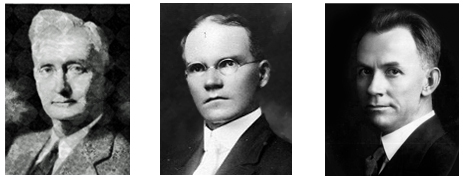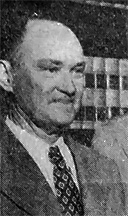|
DAVIS ACQUIRES LAND AND WATER FOR
DAVIS ISLANDS Oct. 2005 Article by Rodney Kite-Powell, Tampa Bay History Center In the early days of 1924, David P. Davis began the lengthy task of assembling property for his Davis Islands development. The first step centered on land acquisition and a contract with the city of Tampa that would sell him Little Grassy Island plus its share in Big Grassy Island. He also needed to receive permission to fill in the surrounding submerged lands. Negotiations between Davis, represented by attorney Giddings Mabry (of the firm of Mabry, Reaves & Carlton) and the city were surprisingly public, with the Tampa Morning Tribune covering their progress on an almost daily basis.
Though Davis and the city quickly came to terms, some public opposition did exist. A small, but-wealthy and influential group of residents who lived on or near Bayshore Boulevard objected to Davis' plans because it would be detrimental to their view of Hillsborough Bay. These residents, led by Dr. Louis A. Bize, an eye, ear, nose and throat doctor and then president of Citizens Bank and Trust, outlined their problems in a letter sent to Tampa City Commissioners on February 12, 1924. The Bayshore residents' view corridor was not their only concern. Their letter outlined six points of "protest '' to the city commission. The first four stated that the city had no right under Florida law to sell the riparian (under water) rights to Davis, or any other developer, for the purpose of filling in. The fifth point served as an appeal to the environmentalists on the commission (there were none), explaining that the development " would be a spoilation of a great portion of Hillsboro [sic] Bay, the greatest natural attraction in the vicinity of said city." They ended with a general attack on the contract itself, which Bize and his neighbors saw as "vague, uncertain, indefinite, and fails to provide limitations against additional encroachments upon the lands held in trust by the City of Tampa and the State of Florida."
|
|||||||
|
Karl Whitaker, 1948 |
Though submitted by eight people, the
neighborhood contingent kept their protest to one page. In contrast,
Karl Whitaker, a powerful local lawyer and future city attorney, wrote
a twelve page screed, attacking the proposed contract point by point.
Whitaker began by explaining he did not "care at this time to enter into a
discussion as to the merits or demerits of the so called Davis Development
Project." Whitaker then outlined what he would like to see happen to
Little Grassy Islands a park similar to one in Miami's Biscayne Bay. His
comments then ranged from the legalities and limits of the project to the
wording of certain parts of the contract, to the size and dimensions of
planned city park space to the small number of limitations placed on Davis
and his development.
While the city did adopt some of Whitaker's suggestions in this regard, such as the prohibition of "railroad terminals," they did not include a covenant restricting "persons of African descent" from buying property within the Davis Islands neighborhood. The appearance of such a covenant would not have been unusual, as there were other developments in Tampa and around the country that included them, but it was not expressly detailed in the final contract. While wrangling with the city and citizenship over his proposed contract and development, Davis also went about the task of purchasing the non-public portions of Big Grassy Island from the estates of the Brown, Henderson and Whitaker families. Davis and his attorney Giddings Mabry negotiated the purchase of the Brown and Henderson portion of Big Grassy Island for $100,000, or $1433.69 an acre. He was not as fortunate in his dealing with the Whitaker Estate, of which Karl Whitaker was an important part. Davis finally purchased the six and one third acres of Big Grassy Island for $50,000- $7936.50 an acre. Following the mantra of the times, if Whitaker could not stop progress, he would at least profit from it. Source: Davis Acquires Land (and Water) for Davis Islands by Rodney Kite-Powell
|
||||||
D.P. Davis & His Islands | Davis' Opposition | Davis' Death & Lucille Zehring | Davis Islands Development After D.P. Davis

